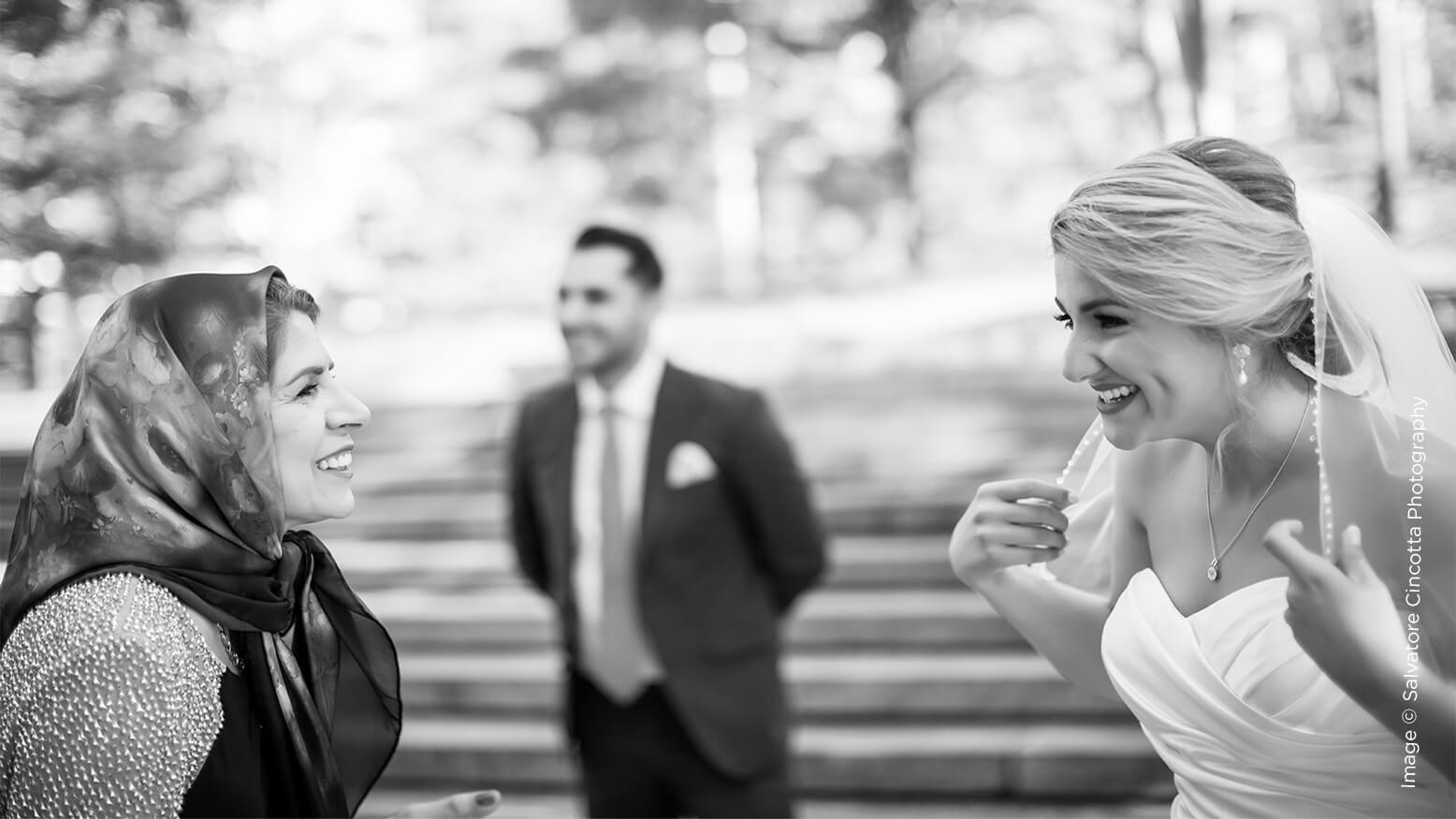How to Photograph for Candid Black & White Images with Alissa Zimmerman
My favorite part of photography is capturing moments. As a second shooter for a primary photographer who knows how to pose and who pays very close attention to details, I can hide in the corner and capture candid moments as they unfold.
Candid photos work so well in black and white, especially when laid out in a wedding album. Here are some of my tips to help you get the best candid images throughout a wedding day that look beautiful in black and white.
Understand When to Snap the Shot
I always find that being borderline-creepy is the best way to get the shot. My favorite candid images are the ones that are voyeuristic in nature, so naturally, you need to be in a voyeuristic mode to get that kind of shot.
My preferred lens is a 70–200mm f.2.8, or sometimes an 85mm f/1.2. These lenses allow me to keep my distance, to use a shallow depth of field to blur out some of the distractions in the background so your viewer is able to focus on the subject.
Sal and I have a very good rhythm on a wedding day, and I suggest you and your other shooter (whether that be your second shooter or primary) take the time to put together a plan similar to ours. This ensures you’re getting those candid moments throughout the day.
First, you’ll want to establish who has the dominant personality. Nine out of 10 times it’s the primary photographer, which is why this person is primary. But sometimes the second shooter has an outgoing personality and is able to get natural emotions out of a group of people. If that is the case, embrace it. The worst thing you can do is force this.
Next, you’ll want the person in charge of capturing the candid moments to assume the position. My preferred place is typically behind a corner wall or tree, somewhere out of direct line of sight. The key is to be as inconspicuous as possible—ninja style, if you will. Have your long lens and shutter-button finger locked and loaded. It’s time for battle.
The final piece to the mission: the main attraction. This is where the designated person goes into comedian role, and when the photo sniper needs to be prepared for action. Jokes will be told, laughs will be had—and these moments are gold to capture.
Know Your Boundaries
Unfortunately, not all candid moments are so easily staged and based in laughter. Sometimes you’ll have to deal with the tough emotions as well. Weddings bring tears of joy and also not-so-joyful tears. It’s your job to capture all of these moments.
Photographers live for these moments: the groom crying when he sees his bride for the first time, the bride and her father sharing a first look before the start of the day, grandma getting out of her wheelchair to walk a few steps down the aisle. These are big moments that create big emotions for you to capture. You always have to be ready. It’s so easy to get caught up in the moment and forget to actually take the picture (trust me, I know all too well). But remember to stay focused on your job and why you’re there.
The key is to keep your distance. A long lens and fast glass allow you to go into stealth mode to capture some incredible moments. When everything is unfolding, shoving a camera in someone’s face will kill the moment and enrage the person or people in front of your lens. Be respectful and make sure your clients don’t even notice your presence.
When you finally reveal the images to your clients, the flood of emotions will surface all over again. That’s how you know you did your job.
Change Your Perspective
This can be taken a few different ways. Photographers sometimes need to change our perspective to see the world in a photojournalistic way. I don’t see the world from a big and artistic perspective quite like Sal does. He sees a range of perspectives, which adds such a unique element to his photography that can’t always be replicated. I, on the other hand, see things pretty black and white (no pun intended).
The way I photograph is close up and personal, romantic and emotional. This is good to look for in primary and second shooter balance—if you’re the primary photographer and see the world big and dramatic, find a second shooter who sees the world tighter and more emotionally. Perspective can be trained as well, so figure out what visual dynamic you want for your brand.
Another simple way to change your perspective: Get low. If there is a ton of clutter in the background, take a knee and shoot at an upward angle. This puts your subject in the sky (or in the ceiling if you’re indoors) and removes all of the distractions around you. If there is a horizon line cutting through the neck of your subject, get low and make sure the subject is above the horizon line.
If you can’t do either of the above, use glass or other reflective objects near you (such as wine glasses, handheld mirrors, even your mobile phone) to shoot through or use for unique reflections in your images. Or buy a prism to always have on hand for this very reason. This technique blurs out the noise in the background and drives your viewer’s eyes directly to the subject.




